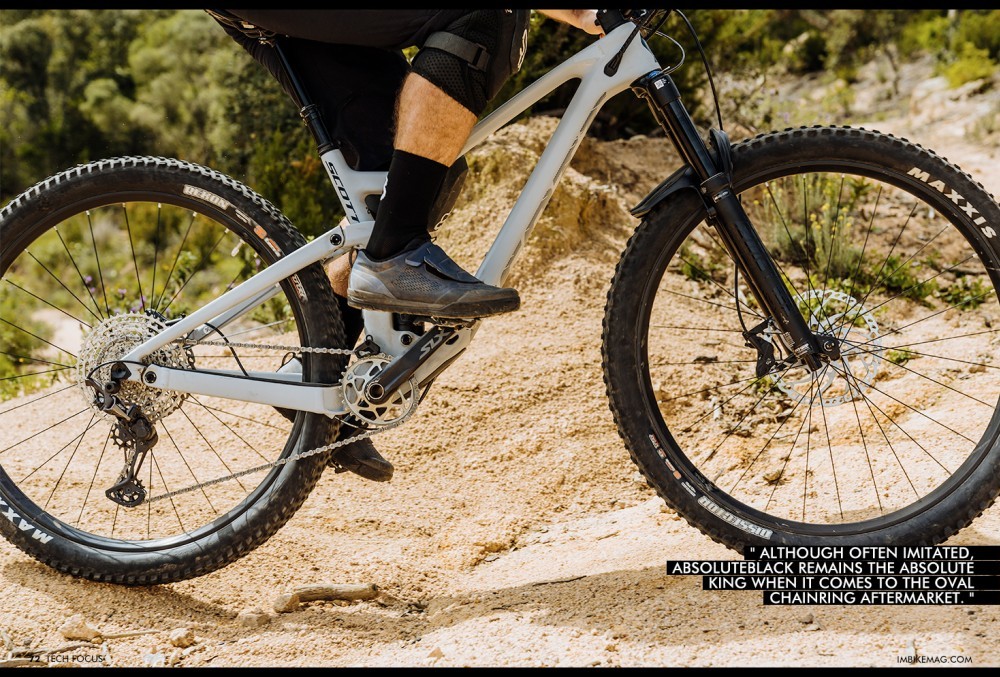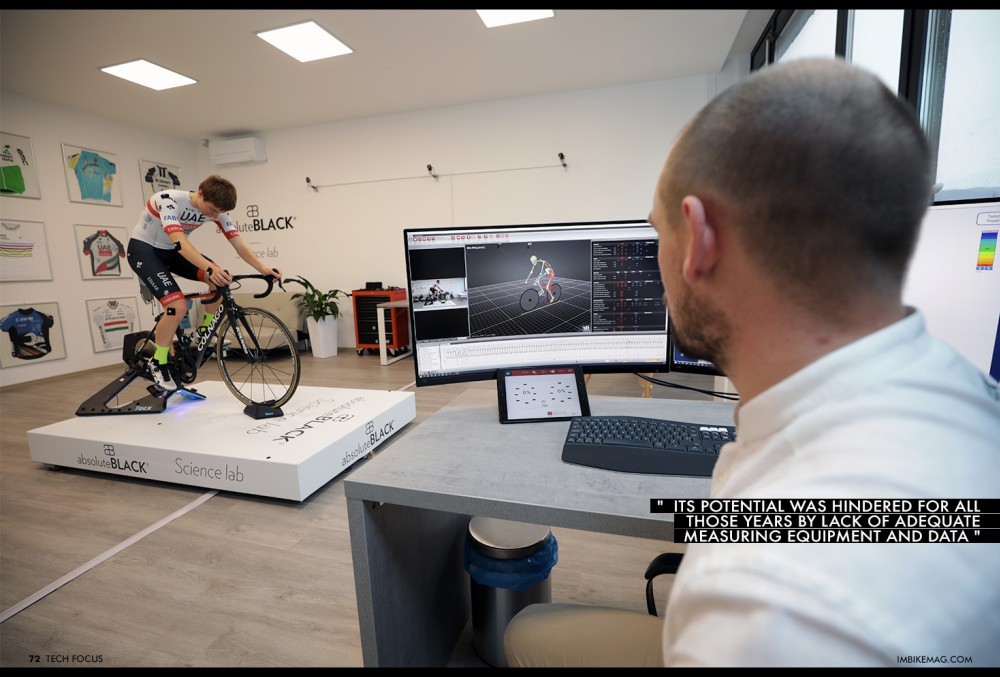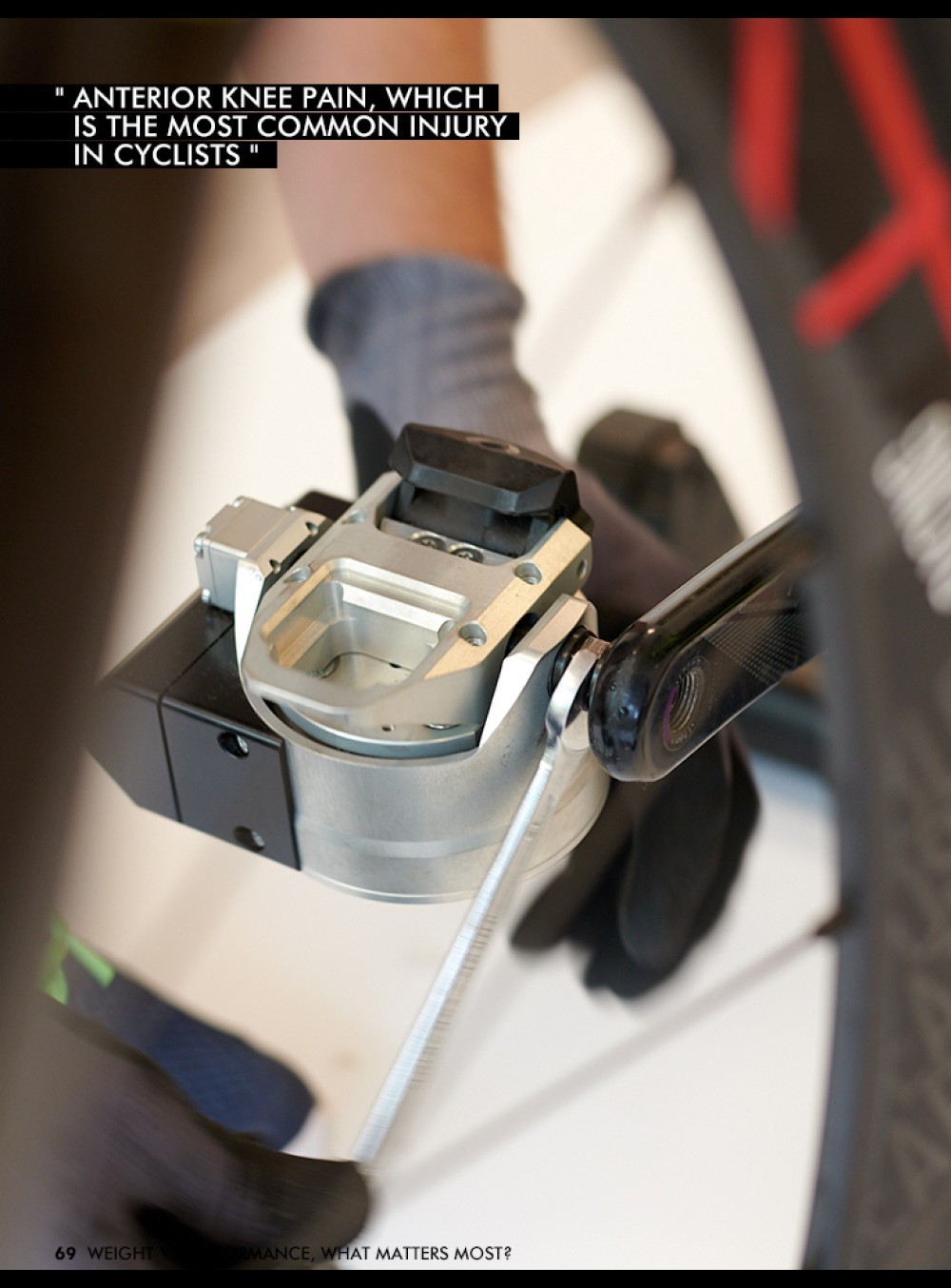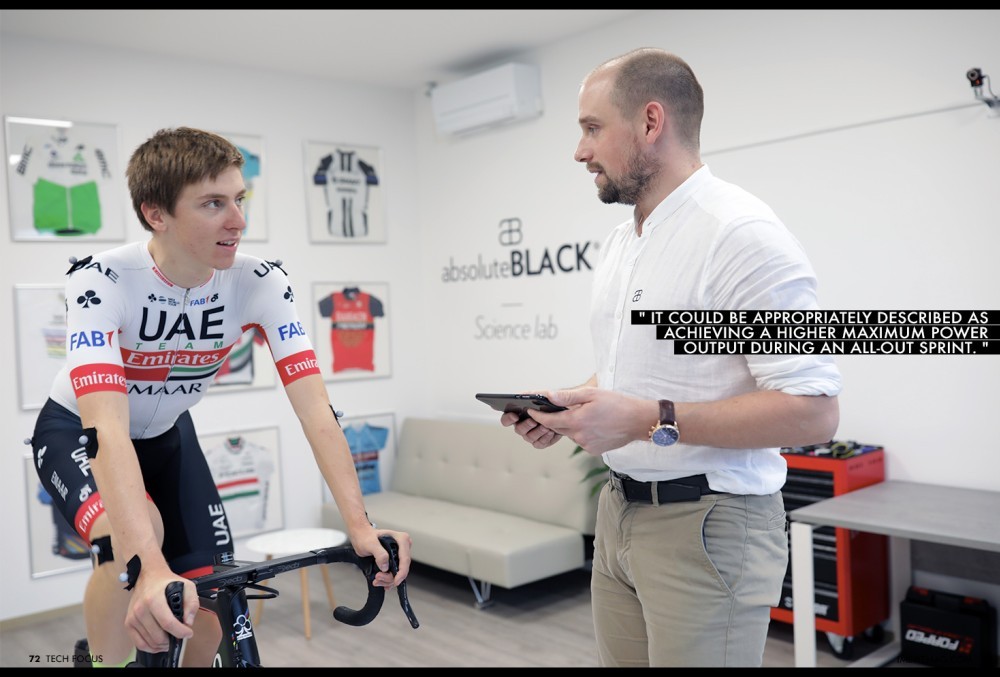
Tech Focus - AbsoluteBlack Oval rings
Issue 72 / Mon 14th Nov, 2022
Let’s take a deep dive in the groundbreaking tech of oval chainrings with the experts of AbsoluteBlack
When it comes to pedalling dynamics, we have seen a lot over the centuries. From the single speed contraptions like the Penny Farthings in the late 1800’s up to modern multi geared wonders of technology we have in the modern day, riders and engineers have always been working on optimising power transfer from the riders legs into forward motion. Lighter equipment, less rolling resistance and optimal seat height have all been examined closely over time bringing the top athletes to bigger and bigger achievements.
Back in 2014 a company called absoluteBLACK saw the light and made a wave in the cycling industry introducing their oval shaped chainrings. Fast forward to 2022 and you can see all the big names offering some kind of non round chainring in their product portfolio. Although often imitated, absoluteBLACK remains the absolute king when it comes to the oval chainring aftermarket.
We took some time to sit down with the masterminds of pedalling perfection and ask everything you wanted to know and more! Dr Borut Fonda, lead scientist at absoluteBLACK Science Lab helped to answer our questions.
First question that comes to mind is, of course, what's wrong with round chainring?
Well, round is just not the best shape, as human biodynamics make it impossible to deliver torque evenly through a pedal stroke. There will always be certain parts of the stroke that see a dip in power output, but by adapting the shape of the chainring you can compensate, resulting in less effort involved in pedalling.
In more detail, the human body uses skeletal muscles to generate force on the pedals, predominantly during the downstroke. Each skeletal muscle has a unique characteristic that doesn’t allow even muscular force throughout its contraction. For example, peak joint power from the knee occurs at around 70 degrees crank angle (0 is at 12 o’clock), whilst the hip peaks well beyond 90 degrees crank angle.
After doing extensive research, we discovered that a power profile throughout a crank cycle is not even, but peaks somewhere around 110 degrees of crank cycle. With that information at hand we started designing oval chainrings to perfectly fit a specific riding style and involve the hip joint to a larger extent, which essentially takes the load off the knee and adds to mechanical effectiveness. The major axis orientation (that is when the chainring’s diameter is the largest) matches the power profile of a cyclist to reduce power losses and transfers the load from the knee to the hip.
Measurements were carried out on thousands of recreational road & mtb riders and hundreds of professional riders, including the entire Pro Tour Team UAE where we officially delivered their scientific biomechanical optimization services with our Science Lab. With such a wealth of data we were able to precisely design the chainrings that are able to increase the most mechanical effectiveness – which means you perceive it as having less effort going at the same speed compared to round.
Wait, didn’t Shimano do something like that in the 80’s?
For the riders that have been around for longer, the oval rings bring back flashbacks of the flop called Biopace from Shimano. Interestingly enough the idea for oval chainrings originates from as far back as 1894. Despite that, Biopace (from 1980’s) somehow became the synonym for all non-round chainrings including “oval”. Interestingly, Biopace was not even oval, but a complex non round shape which delivered weird pedalling motion, and for some users, even knee pain. The oval chainring is not a new idea by any stretch of imagination, but its potential was hindered for all those years by lack of adequate measuring equipment and data, which would allow it to perfect the design and deliver on performance promises. It was only during the last decade that ovals have gained popularity, thanks to our continuous efforts and compelling data from our Science laboratory.
So do you know why Biopace resulted in knee issues?
Reason for the knee pain was simply its wrong “oval” shape and most importantly timing (major axis of oval vs crank position). The same problem is present in the patent from 1894 we mentioned earlier. One of the main reasons for knee pain are shear forces between the tibia and the patella (knee cap) and between the patella and femur. They result in anterior knee pain, which is the most common injury in cyclists. Biopace’s unfortunate design actually emphasised loads where the knee shear forces are the largest, resulting in overloading of the knee and knee pain.
I’m not a racer, would I still benefit from oval rings?
Well the conclusion is that, a perfectly designed oval chainring can significantly improve pedalling effectiveness and metabolic efficiency when compared to a round chainring. In simple terms, this means you will waste less force that does not contribute to moving the crank around, allowing you to achieve the same speed with less effort vs round chainring. Even if you’re not racing, it is nice to be able to climb using less energy, leaving more in the tank for the descents or for doing longer rides.
I’ve heard someone say oval rings give you more power. Is this the case?
We should first define what ‘more power’ actually means. It could be appropriately described as achieving a higher maximum power output during an all-out sprint. Although it has been shown in the past that oval chainrings may improve, to some degree, sprinting performance, this is not the real performance benefit. What cyclists are unknowingly referring to, is actually the effectiveness of pedalling and efficiency. With absoluteBLACK oval chainrings, we demonstrated that cyclists exhibit 9% more effective pedal stroke by applying less force to the pedals that doesn’t contribute to power. Riders are simply applying less muscular force input for a given power output (vs round rings), or in other words, it allows them to pedal at higher power outputs with the same effort as with round rings before. It also results in improved efficiency, which is a metabolic measure (the ratio between the mechanical work and energy expenditure). So in short, it is more that cyclists improve their efficiency when using absoluteBLACK oval chainrings, not so much improving their peak power output.
Aside from biomechanical advantages, are they better or worse for drivetrain efficiency?
Drivetrain efficiency is not affected by the chainring’s shape. It mainly depends on the chain friction itself and we worked on that issue with our groundbreaking GRAPHENlube. It is used by several Pro Tour teams saving them over 7 Watts in frictional losses. We are looking at the problem holistically and approach it mechanically and biomechanically.
That all sounds pretty amazing, but are there any drawbacks to the design? Are they heavier than conventional chainrings for example?
Aside from the fact that you can’t really hide the oval shape, there are only advantages. They don’t bear the weight penalty versus the oem round chainrings.
There are numerous brands out there these days offering non round chainrings. How does your design set itself apart from the competition?
Apart from our world-renowned aesthetics and quality, the real difference is in our own Science Lab. The wealth of data we have collected using proprietary technology, allowed us to create oval chainrings that are as good as they can be. The data is the key to success with a product like this and as far as we know, we are the only company out there, which has its own Science Laboratory giving us capability to measure, assess and repeatedly test the products. While other companies treat “oval chainrings” as a trendy add-on to their portfolio, we have been living and breathing drivetrain optimization for more than 7 years now. This is also the reason why we used our Science Lab to provide scientific biomechanical optimization services to several Pro Tour teams including UAE Team Emirates, helping them optimise pedalling efficiency.
With the benefits scientifically proven and quite profound, why only the specialists are designing these systems, why isn’t Shimano or Sram doing it as standard?
In our opinion, there are few reasons for this. Round chainrings are simply easier and cheaper in mass production. Front derailleur is also faster and easier to set up with round chainrings, which for OEM bike builders, where every second matters on the production line, is very important. Time is money. Taking plastic Press-fit bottom brackets as an example. They were not created for better performance but for faster and easier assembly on the production line, as they don’t require precise threads and bb shell faces on the frame. For those reasons alone, it may take some time until we see them fully mainstream. It is really a performance upgrade product, but it is not crucial for the bike build in very-tight margin OEM business’, where 1$ makes or breaks a deal.
Final question, how long does it take to get used to an oval ring?
When you hop on your bike with a brand new absoluteBLACK oval ring, you will feel a subtle difference. It really depends on the person, some will not notice it after only 10 min but most riders get used to the new chainring in one or two rides and then the feeling completely fades away and becomes a new “normal”. If you really can’t get along with your new oval ring, you can always use our 30 day satisfaction policy! Using this occasion, please remember to always use a brand new chain with your new chainring to maximise drivetrain life.
Thanks. That was very helpful and really explains what the fuss is all about the oval chainring hype.
If you want to know more about oval chainrings or absoluteBLACK as a company, visit their website here:
By IMB








